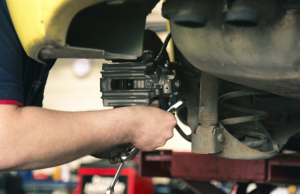 Formula One racing is one of the world’s biggest entertainment pastimes — a competitive sport that demands dedication and perseverance from its participants. If you’re just looking for a new hobby, Formula One racing might not be right for you – but if you have the drive to succeed and the patience to train for years, these tips can lead you to victory.
Formula One racing is one of the world’s biggest entertainment pastimes — a competitive sport that demands dedication and perseverance from its participants. If you’re just looking for a new hobby, Formula One racing might not be right for you – but if you have the drive to succeed and the patience to train for years, these tips can lead you to victory.
Consider Racing School
If you’ve been driving on normal roads for years, you might think that you have an understanding of what it takes to drive a Formula One car – after all, it’s just faster, isn’t it? Not exactly. Formula One cars require faster reflexes than normal driving and involve higher stakes, not to mention the inherent differences in the designs of the vehicle platforms. Racing schools can give you an opportunity to refine your skills and see what you’re made of – not only that, but they allow access to vehicles you might not be able to try out otherwise. This is a great way to make sure this is the right path for you.
Start Slow in a Kart
Some suggest that you should train with a go-kart before you actually start Formula One racing – while this can be a valuable way to train your skills, it isn’t always necessary. That said, if you do need to start out slow, try earning a go-kart certification and finding a nearby course that has their own karts. That way you’ll save money overall and you’ll always have somewhere to train – and some go-kart races even have cash prizes, meaning you could earn back the price of your membership to the course.
Meet Racing License Standards
Since this is a rather dangerous sport, you’ll need to meet a number of requirements to become a Formula One racer – you’ll need to spend two years of licensed racing in a junior class of single-seat vehicles, like go-karts, as well as 40 race points from victories. You’ll also need 300 hours in a Formula One car itself on a course or as a junior member of a team – and, of course, you’ll need to be a legal adult.
Keeping all of this in mind, Formula One looks like a hard hobby to break into – but if you’ve got the skill and the commitment to go the extra mile, those steps should help you get started.




